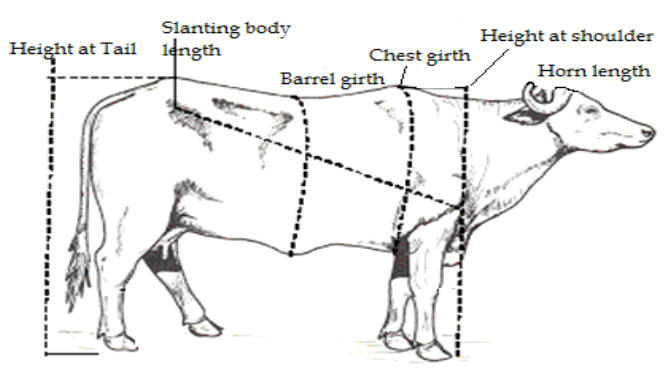Effects of parity and location on body dimensional measurements in Iraqi buffaloes at southern: A case study at Al-Nasiriyah governorate
Keywords:
Buffaloes, Bubalus bubalis, Morphological, Iraqi buffaloes, Parity, Correlation coefficient, IraqAbstract
This study was carried out in the ALNasiriyah governorate (385 km in south of Baghdad) to investigate on some morphological characteristics of buffaloes raised in southern area of Iraq. A total of 119 females from four different locations are randomly chosen over period 11/10/2011 to 16/10/2011 to be used. The overall mean for body dimension, heart girth (HG), barrel girth (BG), heart depth (HD) barrel depth (BD), body length (BDL) and slanting body length (SBDL), height at shoulder (HAS), height at tail attachment (HAT), distance between shoulder (DBS) and femurs (DBF), horn length (HL) and tail length (TL) were 215.7, 242.9, 76.7, 72.6, 231.5 and 113.1, 146.2, 142.9, 43.0, 55.6, 43.3 and 106.0 cm respectively. Parity has a highly significant effect on most of studied traits except of DBF (P LT 0.05) and there was no significance effect on TL. Results showed gradual increasing in HG, BG, BD, HAS and SBDL from calving to the fourth or fifth calving, whereas BDL and HAT was increased from first calving to the third calving. However, the most of body dimensional traits were deleterious during sixth calving onward. Location has highly significant effect (P LT 0.01) on HAS, HAT, DBF and TL and significant effect (P LT 0.05) on BDL and SBDL, while the others was not affected by location. The current findings reflect the poor feeding and management practices in southern region of Iraq due to many farmers depend mainly on marshes grasses such canes. Furthermore, the positive correlation between most dimensional traits and milk production could enhance smallholder buffalo farmers to improve their productivity via improve feeding practice and veterinary care.
Downloads
Metrics





.png)








